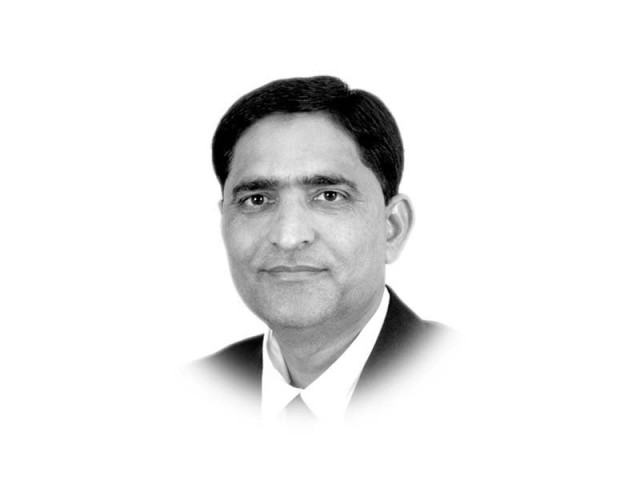Women in the superior judiciary
Pakistan is the only country in South Asia to have never appointed a woman as Supreme Court judge

The writer is a lawyer. He can be contacted at zranjahlaw@gmail.com
Moreover, the international Convention on the Elimination of All Forms of Discrimination against Women (CEDAW) states that ‘‘State parties shall take all appropriate measures to eliminate discrimination against women in the political and public life of the country and, in particular, shall ensure to women, on equal terms with men, the right to participate in the formulation of government policy and the implementation thereof and to hold public office and perform all public functions at all levels of government” (Article 7). Further, Pakistan is signatory to the International Conference on Population and Development in Cairo, 1994; the UN Conference on Women in Beijing, 1995. Pakistan has also signed the UN’s Millennium Development Goals and Sustainable Development Goals, which set out gender equality as one of its main goal. Pakistan, having signed these international instruments, is obliged to promote gender equality in the superior judiciary as well.
The Human Rights Commission of Pakistan’s report on the State of Human Rights in Pakistan (2016) observed that only 5.3 per cent of Pakistan’s high court judges are women, the lowest in the region. The report demonstrates that working conditions and opportunities immeasurably discriminate against women, who are, as a result, rendered less able to progress despite their brilliance in the legal profession.
The 18th and the 19th Amendments to the Constitution stipulate a nine-member Judicial Commission of Pakistan and an eight-member parliamentary Committee for the appointment of judges in the superior judiciary. These bodies do not provide specific representation to women. Further, the criteria on which nomination for judicial appointments are made is arbitrary considering that only few women have been appointed in the superior judiciary.
In 1974, Justice Khalida Rashid Khan was appointed a Peshawar High Court judge. Twenty years later in 1994, Justice Majida Rizvi was appointed a high court judge in Sindh. The same year Nasira Javaid Iqbal was appointed a high court judge in Lahore. Justice Syeda Tahira Safdar was confirmed as a judge of the Balochistan High Court in 2011. Justice Ayesha A Malik, an eminent lawyer, was elevated to the Lahore High Court in 2012. Justice Aalia Neelum was appointed in the Lahore High Court in 2013. Justice Ashraf Jehan was appointed as a judge of the Federal Shari’at Court in 2013. Erum Sajjad Gul was appointed to the Lahore High Court in 2015, but not confirmed.
Other countries in the region have much better indicators regarding gender equality in the superior judiciary. Fifty years ago, Sri Widoyati Wiratmo Soekito became the first Indonesian woman to be elevated to the Supreme Court in 1968. India had its first female judge of the Supreme Court, Fathima Beevi, in 1989. In 2012, Maria Lourdes Sereno was named the first female chief justice of the Philippines. Sushila Karki was the first female judge to head Nepal’s Supreme Court in 2016.
Superior judiciaries of developed countries like the UK, the US and Canada might be infested with gender bias, but several female lawyers have been able to serve in the apex courts. Brenda Hale is a British judge currently serving as president of the Supreme Court of the United Kingdom; she was also the first female lawyer to be elevated as a Law Lord in 2004. In the US, Sandra Day O’Connor was appointed in 1981 as the first woman to serve on the Supreme Court of the United States. Ruth Bader-Ginsberg was appointed as Supreme Court judge in 1993. Sonia Sotomayor has been serving since 2009, and Elena Kagan was appointed as a Supreme Court judge in 2010. Justice Rosalie Abella was elevated as a judge of Canada’s Supreme Court in 2004. Beverley McLachlin served as the Chief Justice of Canada from 2000 to 2017.
In order to eradicate gender imbalance in Pakistan’s superior judiciary, Article 175A could be revised to ensure due representation of women — both in the Judicial Commission of Pakistan and in the Parliamentary Committee. A specific quota for women in the superior judiciary may also be prescribed within the mandate of Article 25 of the Constitution. The population of women in the country and proportion of women in the legal profession may guide our policymakers regarding fixing an appropriate quota for women in the superior judiciary.
Women lawyers should be provided a conducive environment so that they may grow as professional lawyers and then be considered for judicial appointments. The emergence of globalised and progressive societies worldwide requires change in traditional perception about the role of women in Pakistan as well. In fact, no country can afford to restrict employment of women in any field in today’s world.
If women are provided due representation in the superior judiciary, they will surely contribute to the overall betterment of society as decisions of superior courts are binding on all institutions. In order to guarantee fundamental rights and achieve equality and social justice, the judicial appointment process has to be made merit-based, transparent, and non-discriminatory. An inclusive approach will help to provide access to justice for all. More specifically, it would help to redress grievances of the marginalised in society, including women and children.
Published in The Express Tribune, April 10th, 2018.
Like Opinion & Editorial on Facebook, follow @ETOpEd on Twitter to receive all updates on all our daily pieces.


1729685382-0/Untitled-design-(57)1729685382-0-208x130.webp)











COMMENTS
Comments are moderated and generally will be posted if they are on-topic and not abusive.
For more information, please see our Comments FAQ